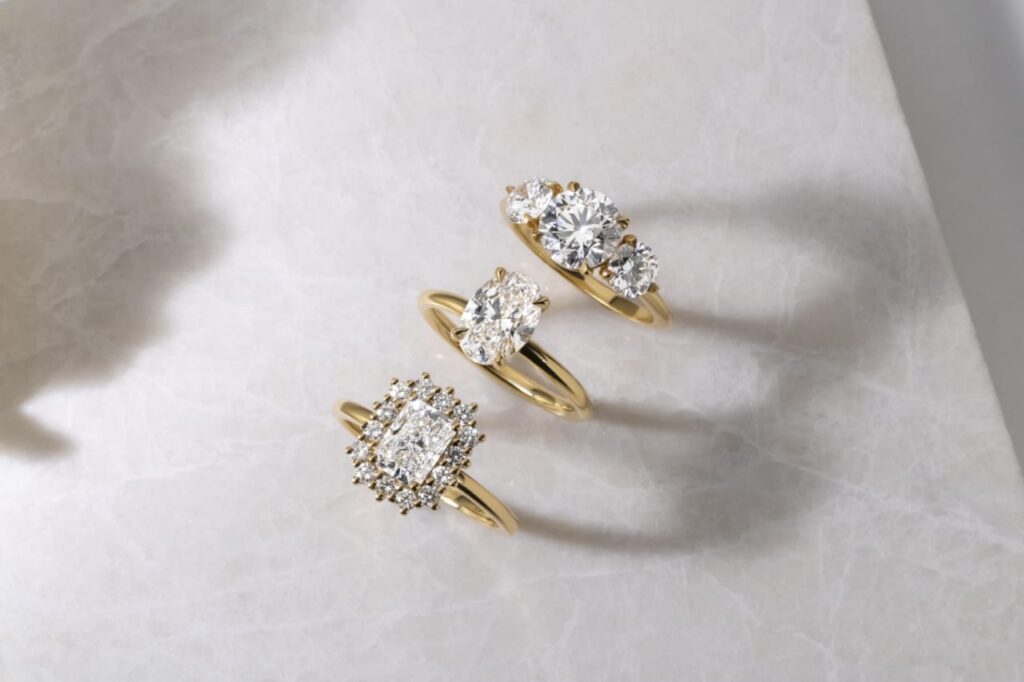Nothing is more important than the selection of a loose stone when it comes to crafting your very own bespoke diamond ring. Having options of stones to stack gives a personal touch, making each piece completely you. Our gemologists explore the specifics of choosing a diamond ring loose stone, including variety and quality as well as styles and buying advice.
Understanding Loose Diamonds
What is a Loose Diamond?
A loose diamond is in simple terms a raw jewel which has not even been introduced into any sort of jewelry fashion. Buyers can look carefully over the stone in order to assure it meets their high-quality standards prior to making it a feature of a ring or other accessory.
Advantages of Purchasing Loose Diamonds
-
Quality Control
You can take a good look at the diamond for its quality before setting it.
-
Customizations:
Put the perfect ring on it.
-
Investment
The good thing about loose diamonds is that even with the jewelry, it might not be an excellent investment but apart from this; they can pay you quite a handsome return.
The 4Cs of Diamonds
-
Cut
Which has to do with the diamond’s anatomy or how well it was shaped. A well cut diamond reflects the most brilliance, and fire – this is what makes it sparkly! This is merely a very special method of informing you that an ideal reduced 3-carat diamond will be far more than the exact maintaining weight with actually bad cuts.
-
Clarity
which is a measure of internal imperfections (inclusions) and external flaws. Natural, flawless diamonds are extremely rare and expensive. Although for a 3 carat diamond, an SI1 clarity grade or better tends to present the ideal balance of look and value. In this scope of inclusions, the majority are invisible to naked eyes.
-
Color
Diamonds are graded from D (colorless) to Z. The best and most luxurious color of diamonds considered to be D, others that belong in the lower end are heavily coated with yellow. A good color grade for a 3 carat diamond ring could be G or higher to ensure your stone remains white and sparkles. Most diamonds without color are considered preferable; but very slight distinctions in body color can be present depending on your price range and viewing conditions.
-
Shape
Typical shapes (eg. White round brilliants tend to cost more per carat than fancy-shaped stones, e.g. emeralds or pears Japanese) This can occur because the cutting process to obtain a desired fancy shape, may cost more of the rough material.
Selecting the Best Loose Diamond
Setting a Budget
Set a Realistic Budget Before You Shop That way, you can know which ones to choose and where exactly your search should be guided towards.
Diamond Shape:
The cut of the diamond is all about preference. Popular shapes include:
- Rounded: Classic, and yet the most dazzling.
- Princess: modern and sharp lines
- Cushion: Soft, rounded edges.
- Oval: Sophisticated, Makes the Finger Look Long
- Emerald: Stylish and retro.
- Marquise: Fun and dark.
- Pear: Unique and Light
Certification
Of course, the best kind of diamond to choose is one that has been verified by an impartial, trustworthy laboratory. This verifies the quality and originality of diamonds.
Popular Diamond Settings
Prong Setting
Prong The prong setting is one of the most typical settings used for engagement rings. It uses metallic claws to accommodate the diamond, leaving most of it exposed and therefore making light more available for brilliance.
Bezel Setting
Bezel: A thin metal rim that encircles the diamond, providing better protection than prongs and a clean, contemporary look.
Halo Setting
A halo setting has a center diamond that is outlined by smaller diamonds in the shape of a circle, which amplifies not only overall sparkle but also size.
Pave Setting
An eternity ring, not like a wedding or engagement ring this is normally given as a gift and is sort of constantly set with diamonds within the pave settingThe complete band serves because of the face.
Tips for Buying Loose Diamonds:
Research Reputable Jewelers
Find a jeweler you can trust. Check reviews and feedback from other writers, certifications or someone who has had the experience in industry for a number of years.
Inspect the Diamond
Place the diamond in front of you and observe it under well-lit conditions. Look for brilliance, fire and any visible inclusions or blemishes.
Compare Prices
The First Diamond You Lay Eyes On Make sure to check the price with other jewelers before you buy it.
Ask About Return Policies
Ensure that the jeweler has a strong return policy in case you are not thrilled with what it looks like once seen IRL.
Conclusion
Choosing a diamond ring that is sold as the loose stone offers you complete control over the final product. From the 4Cs to different shapes and settings, alongside reputable sources – you can have a beautiful personalized ring that will be adored for generations.
